There’s something incredibly breathtaking about orange flowers that make them stand out among other flower colors. We’ve put together a list of 46 different orange flowers with the flower’s type, growing zone, sun and water needs, soil pH, other names, and the flower’s shape. We’ve also given a few interesting facts for these.
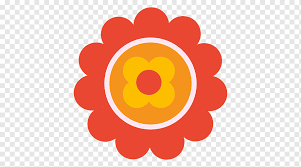
1. Aloe Vera
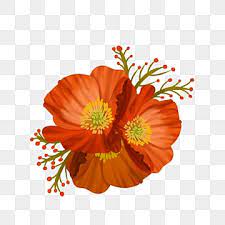
- Type – Perennial
- Hardiness zone – 8 – 11
- Sun – full
- Water – Low
- Soil pH – 6 to 7
- Blooming season – Fall to Winter
- Common names – Chinese aloe, true aloe, Barbados Aloe, Indian Aloe, First Aid plant, burn aloe
- Flower shape – conical spikes; orange or red color.
Interesting Facts:
Aloe is medicinal. The gel inside the stems is excellent for burns and minor scrapes.
2. Alstroemeria
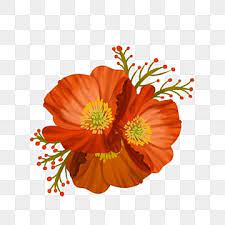
- Type – Perennial
- Hardiness zone – 8 – 10
- Sun – full
- Water – Moderate
- Soil pH – 6 to 7
- Blooming season – Late spring to early fall
- Common names – Princess Lily, Peruvian Lily
- Flower shape – 2″ trumpet-shaped formed in clusters; orange, pink, white, red, or salmon-colored; freckles or tiger stripes
Interesting Facts:
Peruvian lilies are often used for bouquets due to their excellent vase life, retaining their bright color for up to two weeks.
3. Begonia
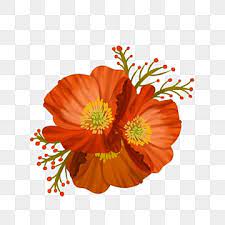
- Type – Perennial
- Hardiness zone – 10 to 12
- Sun – Moderate
- Water – moist soil
- Soil pH – 5.2 – 6
- Blooming season – Early summer to fall (June to the first frost)
- Common names – none
- Flower shape – single, double, or ruffled; orange, white, yellow, or red color; upright or trailing design. Varying sizes
Interesting Facts:
There are over 1,000 species of Begonias. This plant is toxic to pets and can cause allergic reactions in some humans. Begonias have medicinal purposes.
4. Bird of Paradise
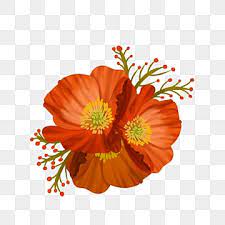
- Type – Perennial
- Hardiness zone – 9 – 12
- Sun – Full sun to partially shaded
- Water – moist but well-drained
- Soil pH – 5.5 – 7.5
- Blooming season – Fall to Spring
- Common names – Crane flower
- Flower shape – three orange petals fused with three blue petals
Interesting Facts:
The Bird of Paradise flower is the official flower gift for a ninth wedding anniversary. This plant is a relative to the banana tree and shares similar large green fan leaves.
5. Bulbine
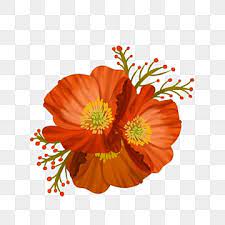
- Type – Perennial succulent
- Hardiness zone – 9 – 11
- Sun – Full sun
- Water – well-drained soil watered weekly; drought tolerant
- Soil pH – 6 to 7
- Blooming season – Spring to late summer
- Common names – cat’s tail, burn jelly plant, snake flower, chigger flower, butterfly milkweed
- Flower shape – Orange star-shape
Interesting Facts:
The Bulbine plant is a native of South America. In 2006, the Florida Nursery Growers and Landscape Association named this flower the Plant of the Year.
The leaves of Bulbine plants have medicinal purposes. The sap works the same way as aloe, so it’s ideal for burns.
6. Butterfly Weed
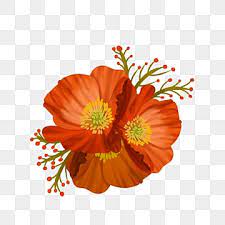
- Type – Perennial succulent
- Hardiness zone – 3-9
- Sun – Full sun
- Water – dry, well-drained
- Soil pH -neutral
- Blooming season – Spring to mid or late summer
- Common names – yellow milkweed, orange milkweed, pleurisy root, chigger weed
- Flower shape – Clusters of small yellow or orange flowers
Interesting Facts:
In addition to butterflies, Butterfly Weeds are also favorites of bees, other insects, and hummingbirds.
The roots have medicinal purposes; chewing them releases pleurisy and pulmonary problems while making them into tea treats stomach ailments like diarrhea.
7. Calendula
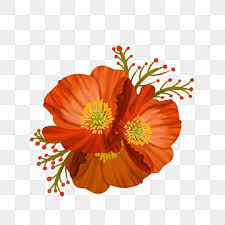
- Type – Annual
- Hardiness zone – 2-11
- Sun – Full sun
- Water – well-drained
- Soil pH – 6 to 7
- Blooming season – spring to late fall
- Common names – pot marigold
- Flower shape – single or double round shape; slender yellow-orange petals
Interesting Facts:
Calendula petals are edible and add a spicy taste to salads, broths, and stews, similar to saffron. In the past, these petals were often used as a natural food coloring for butter and cheese.
8. California Poppy
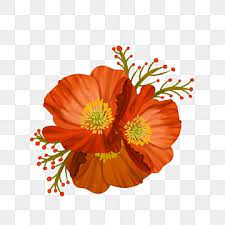
- Type – Annual/Tender perennial
- Hardiness zone – 2-11
- Sun – Full sun
- Water – well-drained loamy
- Soil pH – 5.2 to 8.3 (6.5 to 7.5 ideal)
- Blooming season – fall to late winter (early spring in some climates)
- Common names – golden poppy, cup of gold, California sunlight
- Flower shape – flowers have four petals; orange, pale yellow, or cream when growing wild; white, pink, or red cultivated varieties.
Interesting Facts:
California Poppy is the California state flower. These go dormant during the hot summer months in some areas. But in coastal areas, they’ll bloom throughout the summer.
A unique trait is that the petals close at night and when it’s cloudy. It’s best to enjoy these flowers growing in nature. The petals fall off if you pick them from the stalk.
9. Canna
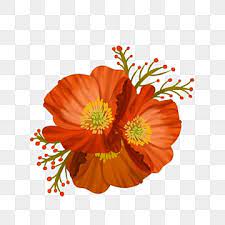
- Type – Perennial
- Hardiness zone – 8-12; in zones, six or below, dig up and store inside for winter.
- Sun – Full sun
- Water – consistently moist
- Soil pH – 6.0 – 6.5
- Blooming season – late spring to early fall
- Common names – Canna lily, Tropical lily
- Flower shape – tall, ruffled with spikes and refined buds; orange, pink, red, and yellow
Interesting Facts:
Hummingbirds love Canna’s large, colorful flowers, which are commonly called canna lilies. However, they are not a member of the lily family.
10. Carnation
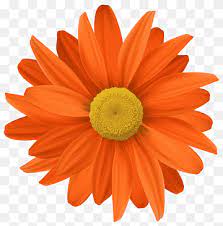
- Type – Perennial
- Hardiness zone – 5-9
- Sun – Full sun
- Water – well-drained
- Soil pH – 6.0 – 6.5
- Blooming season – late spring to early summer
- Common names – Flowers of God, clove pink, flower of love
- Flower shape – multiple fully double, ruffled petals; orange, magenta, pink, white, bicolors
Interesting Facts:
There are dozens of varieties of carnations that flower heavily. The flowers have a spicy clove fragrance. The carnation is one of the oldest cultivated species in history.
Ancient Greeks and Romans used carnations for decor and art. In Christianity, it’s believed the first carnation grew from the tears Mary wept as Jesus carried his cross.
11. Chrysanthemum
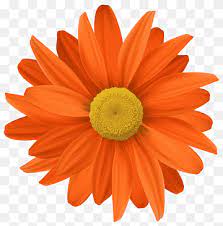
- Type – Perennial
- Hardiness zone – 4-9
- Sun – Full sun
- Water – well-drained, evenly moist
- Soil pH – 6.5
- Blooming season – late summer to fall
- Common names – Mums
- Flower shape – pompon petals form globular bloom; single or semi-double daisy design with center disk and ray florets; semi-doubles with raised pincushion center; spider, quill, and thistle have thin tube-like petals and closed center
Interesting Facts:
Chrysanthemums are the second most common flower with 40 wild species and thousands of cultivated varieties. This flower species has been proven to reduce air pollution and repel insects. And it’s the birth flower of November.
In Chinese and Japanese cultures, the mum plant is a symbol of youth. In China, it’s believed that mums prevent gray hair and that a single petal at the bottom of a glass of wine can improve longevity.
12. Cockscomb
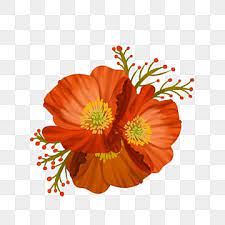
- Type – Annual/Perennial in zones 9-10
- Hardiness zone – 6-11
- Sun – Full sun to light shade
- Water – moderate to well-drained
- Soil pH – 6.5
- Blooming season – summer to early fall
- Common names – wool-flower, feathered amaranth, red fox
- Flower shape – Flat fan base with convoluted ridged heads made of many tiny flowers 5″ tall and 4″ wide
Interesting Facts:
Cockscomb gets its name due to the similarity of the flower’s design to a rooster comb. The flowers at the base will be lighter than the flowers at the top. Some varieties can resemble a cauliflower.
13. Coppertips
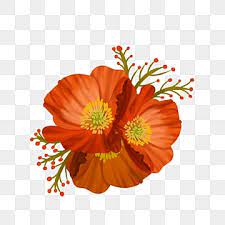
- Type – Annual/Perennial in zones 9-10
- Hardiness zone – 6-11
- Sun – Full sun to partial shade
- Water – average, well-drained
- Soil pH – neutral 6.5-7.5
- Blooming season – mid to late summer
- Common names – montbretia, Crocosmia
- Flower shape – tubular, strappy foliage; orange, yellow, or red
Interesting Facts:
Planting crocosmia is a great way to attract hummingbirds to your yard. And these blooms make great vase plants as they can last up to two weeks after cutting.
These plants can cause gastrointestinal issues for pets if eaten. Keep these plants out of reach, including bulbs, leaves, and flowers.
14. Cosmos
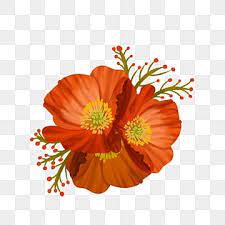
- Type – Annual
- Hardiness zone – 2-11
- Sun – Full sun
- Water – well-drained loamy
- Soil pH – 6.0 to 6.8
- Blooming season – summer to fall
- Common names – Diablo
- Flower shape – 3″ to 5″ bowl or open cup-shaped; orange, pink, maroon, white, and red and yellow
Interesting Facts:
Cosmos can grow to be between 18″ and 60″ tall, depending on the species. There are over 25 varieties in various colors and sizes.
15. Crown Imperial
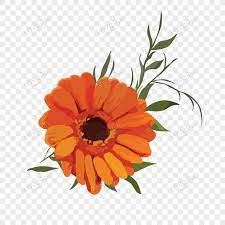
- Type – Perennial
- Hardiness zone – 5-9
- Sun – Full sun to partial shade
- Water – moist, well-drained
- Soil pH – 6.1-7.8
- Blooming season – mid-spring to early summer
- Common names – Fritillaria imperialis, formerly called Persian Lily
- Flower shape – bell-shaped
Interesting Facts:
The translation of imperialis is “of the emperor,” which refers to how the flowers form a circle, resembling a crown.
Legend says these flowers used to be white and grow upright towards the sun. But on the day Christ died, all the flowers in the world drooped with sadness, except the Crown Imperial. Full of guilt, these flowers blushed crimson and now droop down.
16. Cymbidium Orchid
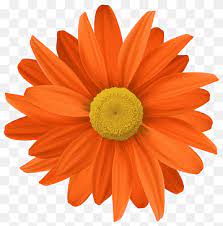
- Type – Evergreen
- Hardiness zone – 10-12
- Sun -partial sun/indirect sunlight; best to have few hours of morning light and shady afternoons
- Water – frequent water in growing season; reduced water during winter bloom
- Soil pH – 5.5 to 6.5
- Blooming season – mid-fall to mid-spring
- Common names – Cymbidium orchid, boat orchid
- Flower shape – large, showy 2″ to 4″ blooms with three colored sepals, one lip, and two colored petals
Interesting Facts:
Cymbidium orchid flowers are often used in corsages and wedding decorations, although the blooms are versatile enough for other designs. This species is cold-tolerant.
It’s believed that these orchids have medicinal powers and are commonly used to improve eyesight, boost the immune system, and to treat cancer.
17. Dahlia
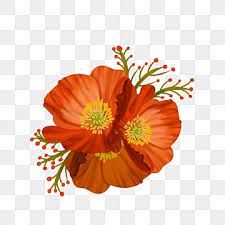
- Type – Tender annual
- Hardiness zone – 3-11 (winter hardy in 8-11/annual in 3-7)
- Sun – Full sun – 6 to 8 hours direct sunlight
- Water – consistent, drip irrigation or deep water once or twice a week
- Soil pH – 6.3 to 7
- Blooming season – mid to late summer (middle of July)
- Common names – Houdini of the garden, queen of the autumn garden
- Flower shape – produces large double ring flowers on large stems many orange varieties ranging in size from 2″ up to 12″ diameter
Interesting Facts:
There are over 50,000 species of dahlias. This flower got its name from Anders Hahl, an 18th-century botanist from Sweden.
This flower is a sign of elegance and dignity, betrayal, travel, change, warning, and diversity. The dahlia has eight genes, whereas most other flowers only have two.
18. Daylily
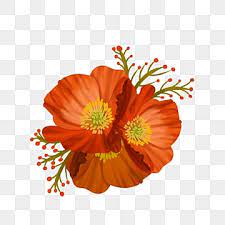
- Type – Perennial
- Hardiness zone – 6-11
- Sun – Full sun or shade
- Water – well-drained soils; watered every couple of days for the first few weeks; once or twice weekly during the first growing season
- Soil pH – 6 to 6.5
- Blooming season – early summer (June)
- Common names – varies by species
- Flower shape – full and round; broad petals with ruffled borders and edges; spidery; double petals and sepals; triangular; trumpet
Interesting Facts:
There are over 80,000 species of daylilies, adaptable to all climates. They come in various shapes, colors, sizes, and appearances.
19. Gerbera Daisy

- Type – herbaceous perennials/annuals in cold climates
- Hardiness zone – 8-11
- Sun – full sun; afternoon shade during high afternoon temperatures
- Water – 1″ a week; more frequently during dry spells or when growing from seeds
- Soil pH – 5.5 to 6.5
- Blooming season – early spring through autumn
- Common names Transvaal daisy, Barberton daisy, quilled, Gerber
- Flower shape – 2″ to 4″ blooms with a light-bronze, yellow or dark center. Orange, red, or yellow rays; single or double-flowered
Interesting Facts:
These South African and Asain native flowers have a special meaning dating back to Victorian times. The color of each flower signifies an emotion or expression.
They are symbols of strength and purity and the astrological flower of Scorpio (Oct 23 to Nov 21), and the flower for April.
Gerbera flowers are used in traditional flower arrangements, including mass flowers and for weddings.
20. Helenium
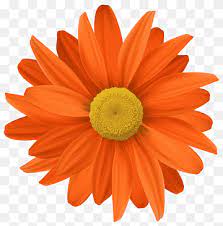
- Type – Perennial
- Hardiness zone – 3 through 8
- Sun – Full
- Water – weekly with more during high heat
- Soil pH – 5.5 to 7
- Blooming season – summer to fall
- Common names – sneezewood
- Flower shape – 1″ to 2″ diameter; daisy or composite pattern with 11 to 21 rays surrounding the central disk. Notched ends with three lobes at the tip.
Interesting Facts:
This plant is called sneezewood because, in the past, it was a component of snuff. However, despite the name, it will not affect those with allergies.
Butterflies are highly drawn to Helenium plants due to their high pollen count. These plants make fabulous cuttings for vases, but they cannot withstand periods of drought while growing.
21. Honeysuckle
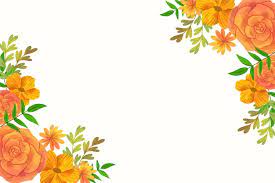
- Type – Perennial
- Hardiness zone – 4 to 9
- Sun – full sun or partial shade
- Water – average, well-drained
- Soil pH – 5.5 to 8
- Blooming season – Spring to early fall (depending on variety)
- Common names – Orange honeysuckle, western trumpet, northwest honeysuckle
- Flower shape – narrow trumpet-shaped; forms in clusters on the tip of branches
Interesting Facts:
Honeysuckles produce sweet nectar that is a typical snack for anyone who walks by these blooming vines. The nectar is also a favorite of hummingbirds.
The name lonicera ciliosa comes from Adamus Lonicerus, named after Adam Lonitzer, a German botanist. It means to have small, fringy hairs like eyelashes and refers to this vine’s hairy leaf edges.
22. Iris
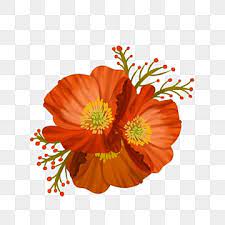
- Type – Perennial
- Hardiness zone – 3-10
- Sun – 6 hours full sun
- Water – well drained
- Soil pH – 6.8
- Blooming season – Spring to summer
- Common names – goes by many names depending on species
- Flower shape – irises can be bearded (most popular) with soft hairs on the lower petals, beardless, or crested (less common).
Interesting Facts:
Iris flowers have been used throughout history by Egyptians and Indians for medicinal purposes and natural fragrance to produce perfumes, which were an offer to the gods.
The iris has been used as the fleur-de-lis, a symbol of French royalty, on multiple flags and banners throughout time, from as far back as King Clovis I in the early 500s, King Louis VII in 1147, and Edward III, the king of England in 1376.
The bearded iris flower is the state flower for Tennessee, and the fleur-de-lis is the emblem of New Orleans, Louisiana. In Germany, iris roots (orris roots) keep beer fresh. There are over 200 different species.
23. Lantana
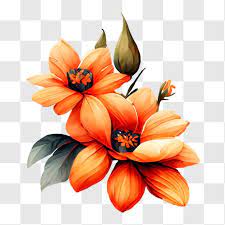
- Type – Perennial in zones 9-11/Annual in zones 1-8
- Hardiness zone – 7-11
- Sun – full sun for 6 hours with afternoon shade
- Water – well-drained or dry
- Soil pH – 5.5 to 6.5
- Blooming season – late spring to the first frost
- Common names – shrub verbena, Lantana Camara
- Flower shape – round clusters of small bright flowers; orange, yellow, white, purple, or red
Interesting Facts:
There are over 150 species of Lantana throughout the world. In Australia, this species is invasive. They are a common species to use for landscaping and come in various sizes, colors, and varieties, including shrubs, trailing, and low-growing.
These flowers produce berries, which are suitable for making pies or to snack on solo. However, avoid unripe berries, which can make some people and animals sick.
This plant has medicinal purposes, including treating skin conditions, respiratory problems, colds, fever, headaches, and indigestion.
If growing this plant in your yard, expect to see lots of attracted butterflies, hummingbirds, and bees, which can make lantana honey.
24. Lily
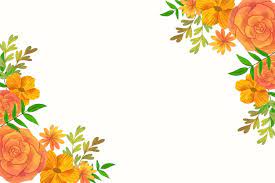
- Type – Perennial
- Hardiness zone – 3-10
- Sun – direct sunlight for six hours a day
- Water – well drained
- Soil pH – 6.5 to 7
- Blooming season – early spring to late fall, depending on species.
- Common names – Lilium
- Flower shape – large solitary or clustered blooms with six petals that form a trumpet, bowl, star, funnel, or recurved (Turk’s cap) shape; three sepals and six long stamens in the middle. The inner flower is spotted or a different color than the rest.
Interesting Facts:
Over 100 species of lilies fall into separate divisions – true, American, Trumpet, Candidum, Aurelian, Martagon, Oriental, and Longiflorum.
Lilies are commonly used for centerpieces, cut flower arrangements, and bridal bouquets, and wedding decorations. Some cut varieties retain their pleasant aroma, which can fragrance a room.
25. Lily of the Incas
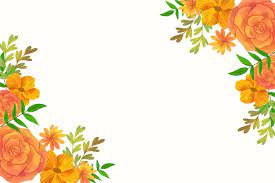
- Type – Perennial
- Hardiness zone – 5-9
- Sun – full or partial shade
- Water – moist, well-drained
- Soil pH – 5.5-6.5
- Blooming season – mid to late summer
- Common names – Peruvian lilies, Alstroemeria, Parrot Lily,
- Flower shape – six petals, varying sizes depending on species; six curving stamens with a three-lobed stigma. Colors include orange, white, apricot, yellow, red, pink, lavender, and purple.
Interesting Facts:
Peruvian lilies are symbolic of devotion and friendship. They come in various colors and are a common flower to use for vase arrangements.
These flowers are sometimes called Alstroemeria due to Baron Von Alstroemer. The baron was a Swedish botanist who introduced these flowers from native South America to Europe in the late 18th century.
There are multiple varieties of lilies in all different colors. Some of the typical orange species include Bali, Flaming Star, Inca Joli, Inca Mambo, Inca Pulse, Inca Tropic, Indian Summer, Koncajoli, Moulin Rouge, Orange Gem, Orange Glory, Pacific Sunset, Perfect Orange, Princess Amina, Princess Sara, and Summer Breeze.
26. Lion’s Tail
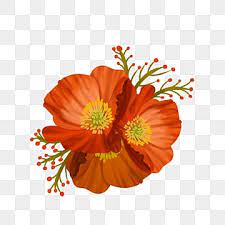
- Type – Perennial
- Hardiness zone – 8-11
- Sun – Full sun, six hours of direct light each day
- Water – well-drained; watered every three weeks
- Soil pH – neutral
- Blooming season – late spring to summer
- Common names – wild dagga, lion’s ear, lion’s paw, wild cannabis
- Flower shape- clusters of fuzzy tubular bright orange flowers on tiered whorls
Interesting Facts:
Lion’s tail has medicinal purposes of treating high blood pressure, asthma, headaches, and muscle cramps. It also contains psychoactive properties similar to cannabis.
This flower is a favorite treat of hummingbirds and butterflies. But it’s also useful as a snake repellent and is deer resistant. These plants grow fast, so they need regular pruning and deadheading for proper growth.
27. Marigold
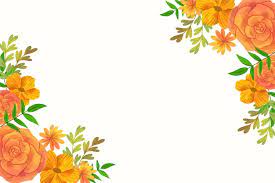
- Type – Annual/Perennial in some climates
- Hardiness zone – 2-11 (shorter lifespan in colder zones)
- Sun – full sun
- Water – moderate; water deeply once top 1″ to 2″ is dry
- Soil pH – 6.2-6.5
- Blooming season – late spring to early autumn
- Common names – Ganda, Caltha, Gold bloom, Gols bloom, Holligold, Garden marigold, pot marigold, and Marybud
- Flower shape – single or full double, with rounded heads and two-lipped or quilled florets. Small, circular with ruffled petals
Interesting Facts:
Marigolds are used medicinally to treat ailments like inflammation, ulcers, upset stomach, eye infections, menstrual issues, and a topical ointment for wounds. It’s also believed that marigolds can reduce fevers, particularly in children.
These flower petals are also used in salads and to make decorative garlands. Historically, boiling the leaves can produce food coloring and dye. In India, marigolds are offered to the Goddess and god on the Durga Puja.
28. Mexican Sunflower
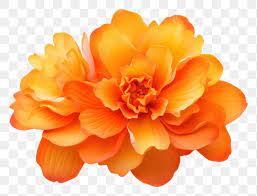
- Type – Annual/Perennial in zones 10 and 11
- Hardiness zone – 9-11
- Sun – full sun or partial shade
- Water – low; drought-resistant and harmed by humid climates. Dry soil completely before re-watering
- Soil pH – 5.8-6.5
- Blooming season – summer to the first frost
- Common names – Tithonia diversifolia, tree marigold, Japanese sunflower, Mexican tournesol, Nitobe chrysanthemum
- Flower shape – sunflower looking flower heads with yellow centers, 7 to 15 ray floret petals with three teeth on the tips. Each flowerhead holds 80 to 120 tiny flowers in the center.
Interesting Facts:
Mexican sunflowers form live fences and for ornamental looks, but they are a globally invasive species and listed as a noxious weed in South Africa.
These are heavily nectared and attract honeybees, bumblebees, hummingbirds, butterflies, moths, and multiple types of birds. Mexican sunflowers are a great addition to backyard bordered flower boxes and butterfly gardens when kept contained.
29. Nemesia
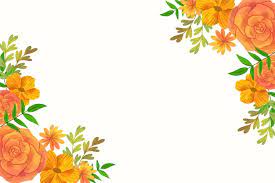
- Type – Annual/Perennial in 9-10 zones
- Hardiness zone – 2-11
- Sun – at least six hours of full sun
- Water – regular watering/moist soil
- Soil pH – 5.5-6.5
- Blooming season – late spring to the first frost
- Common names –
- Flower shape – similar to orchids, the top four petals make a fan with a large lobed petal underneath in the shape of trumpets.
Interesting Facts:
These plants are native to South Africa, and many species are listed as weeds due to their growth in the disturbed ground where they’re unwanted.
30. New Guinea Impatiens
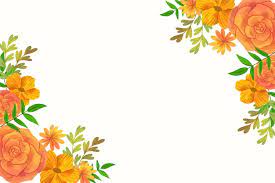
- Type – Annual
- Hardiness zone – 10-12
- Sun – Full sun/partial shade
- Water – well-draining loose soil, regular watering
- Soil pH – 6.0-6.5
- Blooming season – continuous
- Common names – jewelweed, snapweed, touch-me-not, patience, impatiens
- Flower shape – five large petals, heavily nectared
Interesting Facts:
Tango is a variety of New Guinea Impatiens that produce stunning fluorescent orange flowers. They do best in temperatures between 70 and 85-degrees during the day and are not cold hardy. You have to wait until after the last frost before planting outside.
31. Orange Columbine
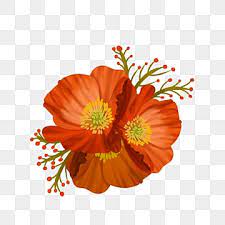
- Type – Perennial
- Hardiness zone – 3-9
- Sun – Full to light shade
- Water – regular watering in well-drained soil
- Soil pH – neutral
- Blooming season – spring to early summer
- Common names – Granny’s Bonnet
- Flower shape – bell-shaped with long spurs that are longer than the petals
Interesting Facts:
There are over 70 different species of Columbine, one of which is the Orange Columbine. They are resistant to deer but attract bees, hummingbirds, moths, and butterflies.
Native Americans used crushed seeds and roots for sore throats, headaches, and heart problems. They also used them for love charms.
32. Orange Coneflower
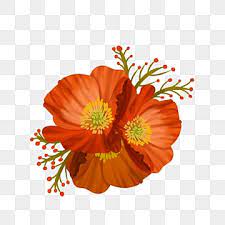
- Type – Perennial
- Hardiness zone – 4-8
- Sun – Full to light shade
- Water – consistent water until established, then more drought resistant
- Soil pH -5.6-7
- Blooming season – midsummer to fall
- Common names – Black-eyed Susan, Goldsturm,
- Flower shape – 3″ slightly curved drooping or overlapping petals with toothed apex, brown or copper cone center
33. Orange Wallflower
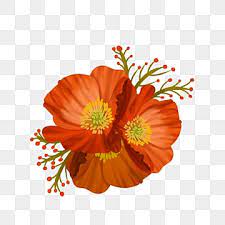
- Type – Annual
- Hardiness zone – 6-9
- Sun – full to partial sun
- Water – water once a week, more during dry seasons
- Soil pH – 7.0-9.0
- Blooming season – spring through autumn.
- Common names – Western Wallflower, Erysimum capitatum
- Flower shape – clusters of four-petal 1″ flowers
Interesting Facts:
The Wallflower got its name for the flower’s frequency of growing on masonry fences, walls, and stone. The Western variations of the Wallflower have more dramatic colors.
European folk medicine used wallflowers for bronchial congestion, while American Indians used the leaves or seeds to make tea to relieve stomach cramps.
34. Pansy
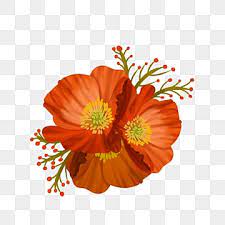
- Type – Annual/Perennial/Biennials
- Hardiness zone – 6-11
- Sun – Partial morning sun, shade in the afternoon
- Water – 1″ a week
- Soil pH – 5.4 to 5.8
- Blooming season – spring through early summer; some repeat growth during fall; through the winter in zones 7 and warmer
- Common names – violet, violaHeartsease, Love-in-idleness; Johnny-jump-up
- Flower shape – thin, delicate rounded petals that look like a face due to the different colored markings. Grows in a range of bright colors and mixed blends
Interesting Facts:
The name pansy comes from pensée, a French word meaning thought. It got this name because the petals have facial characteristics and often nod forward as if deep in thought.
35. Penstemon
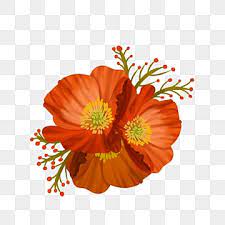
- Type – perennial
- Hardiness zone – 5-9
- Sun – Full sun
- Water – low water needs (10″ to 30″ annually)
- Soil pH – 5.8 to 6.2
- Blooming season – late spring to early summer
- Common names – Penland’s beardtongue, Penland penstemon, Pineleaf Penstemon
- Flower shape – narrow tubular
Interesting Facts:
Several hundred different types of Penstemon plants of varying sizes, blooms, leaves, shapes, and sizes.
36. Pincushion
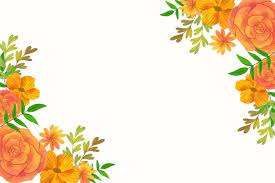
- Type – Annual
- Hardiness zone – 3-7
- Sun – full
- Water – well-drained, water once a week, twice during droughts
- Soil pH – 6-7.5
- Blooming season – spring until the first frost; heaviest in May
- Common names – Scabiosa, Scabious,
- Flower shape – protruding stamens from the center of the round buttons, rosette in form, fragrant blooms
Interesting Facts:
There are over 30 species of pincushion flowers, both perennial and annual. This herb is a member of the honeysuckle family.
37. Poppy
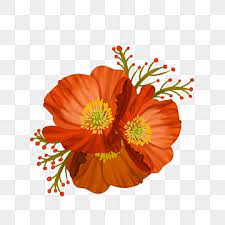
- Type – Annual
- Hardiness zone – 3-7
- Sun – full
- Water – low, between 10″ to 30″ a year
- Soil pH – 6.5-7.0
- Blooming season – late spring into early summer
- Common names – varies by species.
- Flower shape – four petals, varies in look and size.
38. Ranunculus
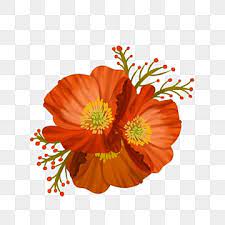
- Type – Perennials
- Hardiness zone – 4-10
- Sun – full
- Water – well-drained, moderate watering
- Soil pH – 6-6.5
- Blooming season – spring
- Common names – buttercup, butterose, crazy weed, gold cup, field buttercup, blister plant, upright meadow crowfoot, tall field buttercup, tall crowfoot
- Flower shape – one to four blooms per stalk, semi-double or fully double, 3″ to 5″ width, dark cone center,
Interesting Facts:
There are over 600 species of Ranunculus genus. Symbolisms of this flower include charm, attractiveness, and careless behavior.
39. Rose
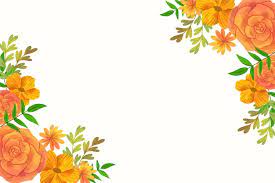
- Type – Perennial
- Hardiness zone – 3-10, depending on species
- Sun – six to eight full hours of sunlight
- Water – 2″ a week
- Soil pH – 6-6.5
- Blooming season – mid-spring to autumn
- Common names –
- Flower shape – wild roses have five petals, while cultivated have up to ten; vary in size and color
Interesting Facts:
There are over 300 species and thousands of cultivars in the Rosa family, including many categories. Roses can grow as bushes, shrubs, trailing or growing up structures, thornless, and miniature.
40. Snapdragon
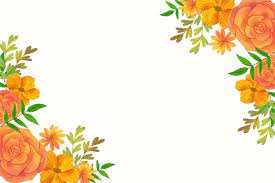
- Type – Annual/Perennial depending on location
- Hardiness zone – 5-8
- Sun – Full sunlight or some shade
- Water – 1″ a week
- Soil pH – 6.2-7.0
- Blooming season – spring until the first frost.
- Common names – dragon flowers
- Flower shape – 3.5cm to 4.5cm, flowers with two lips; forms clusters of 8 to 30 short flowers with a different colored crown
Interesting Facts:
The snapdragon got its name due to the flower’s similarities to a dragon face. When you squeeze the flower, it looks like the dragon’s mouth opens and closes.
41. Strawflower
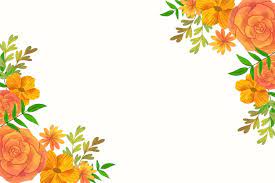
- Type – Annual
- Hardiness zone – 8-10
- Sun – full
- Water – well-drained, medium moist
- Soil pH – 5.5-6.5
- Blooming season – spring through fall.
- Common names – everlasting flower, golden everlasting, paper daisy, everlasting daisy
- Flower shape – crisp petal bracts, which are dry, dead tissue. Tiny florets in the dense center disc are the actual flowers. These can be a different color than the bracts. 1″ to 3″ head
42. Tiger Lily
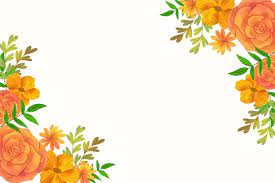
- Type – Perennial
- Hardiness zone – 3-9
- Sun – full but can tolerate partial shade.
- Water – deep watering once a week
- Soil pH – 5.5 to 6.0
- Blooming season – early summer to autumn
- Common names –
- Flower shape- bright orange flowers with crimson or black streaks. Thin stamens with colored tips protrude from the center. Leaves curl backward with pointed ends.
Interesting Facts:
The Tiger Lily gets its name due to the black marks along the leaves’ inside, which look like the pattern of a tiger’s coat.
43. Torch Lily
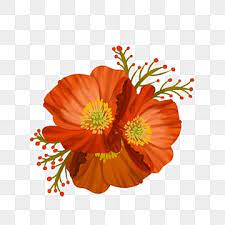
- Type – Perennial
- Hardiness zone – 5-9
- Sun – full
- Water – moderate
- Soil pH – 6.6-7.0
- Blooming season – spring through fall.
- Common names – red hot pokers, Kniphofia, tritomea,
- Flower shape – tall multicolored spikes that form in clusters
Interesting Facts:
Despite the name, torch lilies are not a lily. They got their name due to their resemblance to torches and the leaves’ resemblance to lily leaves.
44. Trumpet Honeysuckle
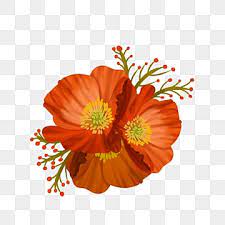
- Type – Perennial
- Hardiness zone – 4-9
- Sun – full sun but can tolerate shade
- Water – well-drained, moist soil
- Soil pH – 5.5 – 8
- Blooming season – summer to fall
- Common names – coral honeysuckle
- Flower shape – trumpet tubular-shaped flowers produced in clusters on climbing vines
45. Tulip
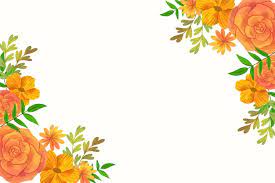
- Type – Perennial but sometimes annual
- Hardiness zone – 3-8
- Sun – Full without direct sunlight during hottest hours
- Water – ⅔” water a week
- Soil pH – 6.0-7.0
- Blooming season – early to mid-spring; only blooms for one to two weeks
- Common names – Tulipa
- Flower shape – large, showy, opening into a cup shape before widening open, so the petals curl back, revealing the colored stamens; can be solid or multicolored.
Interesting Facts:
The name tulip is believed to have come from the Persian word, translating to turban, due to their shape. Although beautiful, tulips do not stay in bloom long.
46. Zinnia
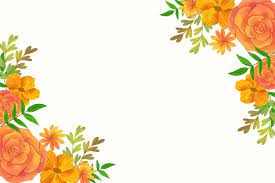
- Type – Annual
- Hardiness zone – 3-10
- Sun – full sun but tolerates afternoon shade in hot climates.
- Water – well-drained soil, 1″ of water a week
- Soil pH – 5.5 to 7.5
- Blooming season – summer to fall
- Common names – common zinnia, elegant zinnia, youth-and-age, Zinnia violacea
- Flower shape – single row or domed shape flowers, with colored center surrounded by colored stamens. May all be the same color or varying
Interesting Facts:
Zinnias belong to the sunflower species, which is part of the daisy family. This species makes excellent cut flowers for bouquets or centerpieces and lasts longer after removed from the stalk.
Conclusion
We hope you’ve enjoyed this extensive collection of different species of orange flowers. Nature sure knows how to give us a show, and these 46 flower types steal the spotlight. Now that you’ve seen the various classifications, you’re ready to incorporate these into your landscaping plans. Happy growing!

